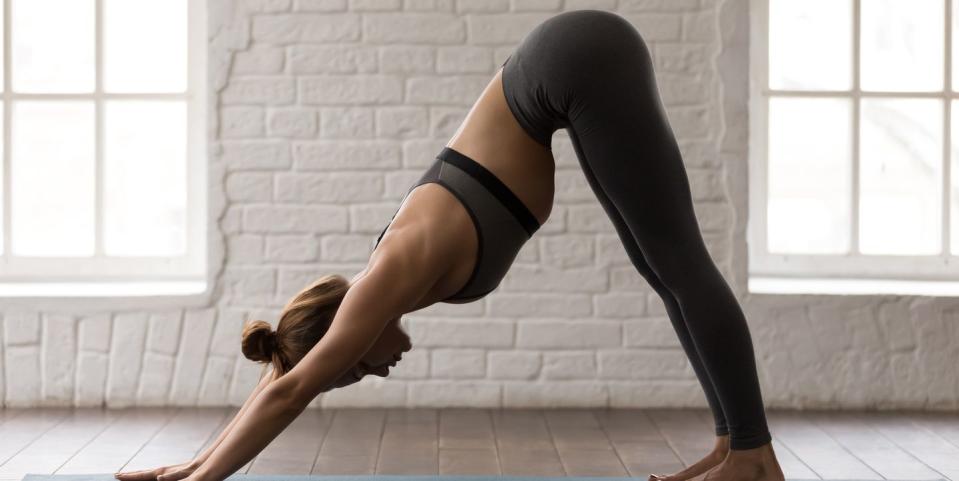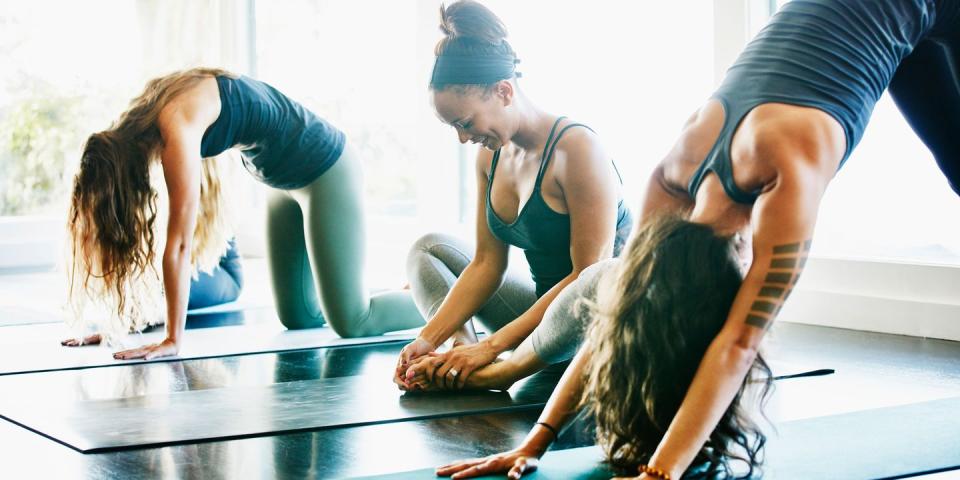Pilates vs yoga: which is better for you?

Yoga and Pilates have plenty in common. Both are popular, for starters; and, like most forms of exercise, both are good for your physical body and mental health.
But you might be wondering, which is better for you, Pilates or Yoga? We speak to yoga instructor Donna Noble and Pilates instructor Olivia Brooks about the differences and benefits of each:
Yoga
What is yoga?
Yoga is a mind and body practice. It can mean a variety of different things to different people, but for me, yoga means union or connection; this isn’t only connection with yourself but also with others creating community.
Pilates vs yoga: what’s the difference?
Yoga is a holistic discipline that has been around for at least 3,000 years and was developed in Ancient India.
Pilates, however, is a specific system that was devised by a German anatomist, Joseph Pilates in the early 20th Century for physical rehabilitation.
Yoga focuses on:
Proper relaxation, breathing, positive thinking and meditation.
Mindfulness and deep breathing are key features in a yoga practice, as well as the mind-body connection.
Pilates focuses on small movements that require the use of important stabilising muscles of the back and core. There is a strong emphasis on starting each exercise with a controlled breath that initiates a contraction of the core muscles. Pilates can be done on a mat or on specialised equipment, the equipment is unique as it only uses springs, levers, and your own bodyweight to provide resistance.
Yoga health benefits
There are so many benefits of yoga as it allows you to come home to yourself, as well as enabling you to become flexible in both the mind and body, allowing you to go beyond your comfort zone and live life fully.
Yoga is a lifestyle choice that helps you to lead a healthier life, preventing injury and enabling you to become stronger. It also allows you to realise the body’s full potential.
Yoga has also been able to heal the body, which has been my personal experience, it’s transformed my life in so many ways.

Yoga mental health benefits
Yoga provides you with the mind-body connection and increases body awareness so that you can understand the signals it gives us, allowing us to reduce and eliminates stress. Concentration and focus also become sharper, so that we will become more efficient. Yoga also allows you to be calm and tune into your internal dialogue, so that we can change our mindset and therefore avoid mental disease.
Are there any drawbacks to yoga?
That yoga is not accessible to everyone. The image of yoga may stop those that truly need it from not being properly able to experience its many fantastic benefits. The imagery can also make yoga seem scary to some; if you are doing a home practice, you may not be aware of potential alignment issues, as it may be difficult to ensure you are doing the poses correctly. Also, there is a risk of injury, just like with any other activity is possible.
Is yoga good for weight loss?
Yoga is good for so many things. Some people with come to yoga for weight loss but end up gaining so much more in their journey. Many forms of yoga claim to be good for weight loss, but this is not something that I personally promote.
Pilates
What is Pilates?
Pilates is a form of exercise designed by Joseph Pilates in the early 20th century based around 34 mat-based original exercises.
Currently, we tailor the moves to account for physical ability; these can be performed at a gentle beginner’s level or more advanced. Originally based on the “Contrology” theory, the art of controlling the body’s movement aims to strengthen the body evenly, with emphasis on core areas through movement and control to improve, mobility, flexibility, muscle strength, leading to general well-being, fitness and back care.
Many physio exercises incorporate the Pilates method. Pilates can be performed using your own body weight or equipment, such as a reformer bed or Wunda Chair, classes may also include light weights, a Pilates ring or soft mini balls.
What’s the difference between yoga and Pilates?
For me, the difference between Yoga and Pilates is simple – Pilates is based on movement and yoga on both pose and stillness. Both have their place side-by-side.
Are there any drawbacks to Pilates?
There are no drawbacks to Pilates, as each exercise can be performed to the client’s ability and modified to suit injury, age, fitness levels and confidence. It can be performed alone and without equipment.
Is Pilates good for weight loss?
Pilates, in particular, isn’t designed in particular for weight loss, but combined with a healthy calorie-controlled diet and regular cardiovascular exercise, it will result in a beautifully toned, flexible and healthy body, with the added advantage of reducing the chance of joint injury, in particular, the back.

Pilates health benefits
Core areas are particularly targeted in the strength area of Pilates to include the whole of the torso, pelvic floor health, glute, quad, shoulder and abdominal strength, all of which will lead to a stronger back to help prevent injury.
For me, I love the four elements of, joint flexibility and movement, back release, toning and even more important, the ability to focus the mind.
Whatever exercise you choose, always make sure you find an experienced qualified instructor and discuss with them any pre-existing injury or mobility problems so you can thoroughly enjoy the practice without harm.
Last updated: 22-07-2020
You Might Also Like

